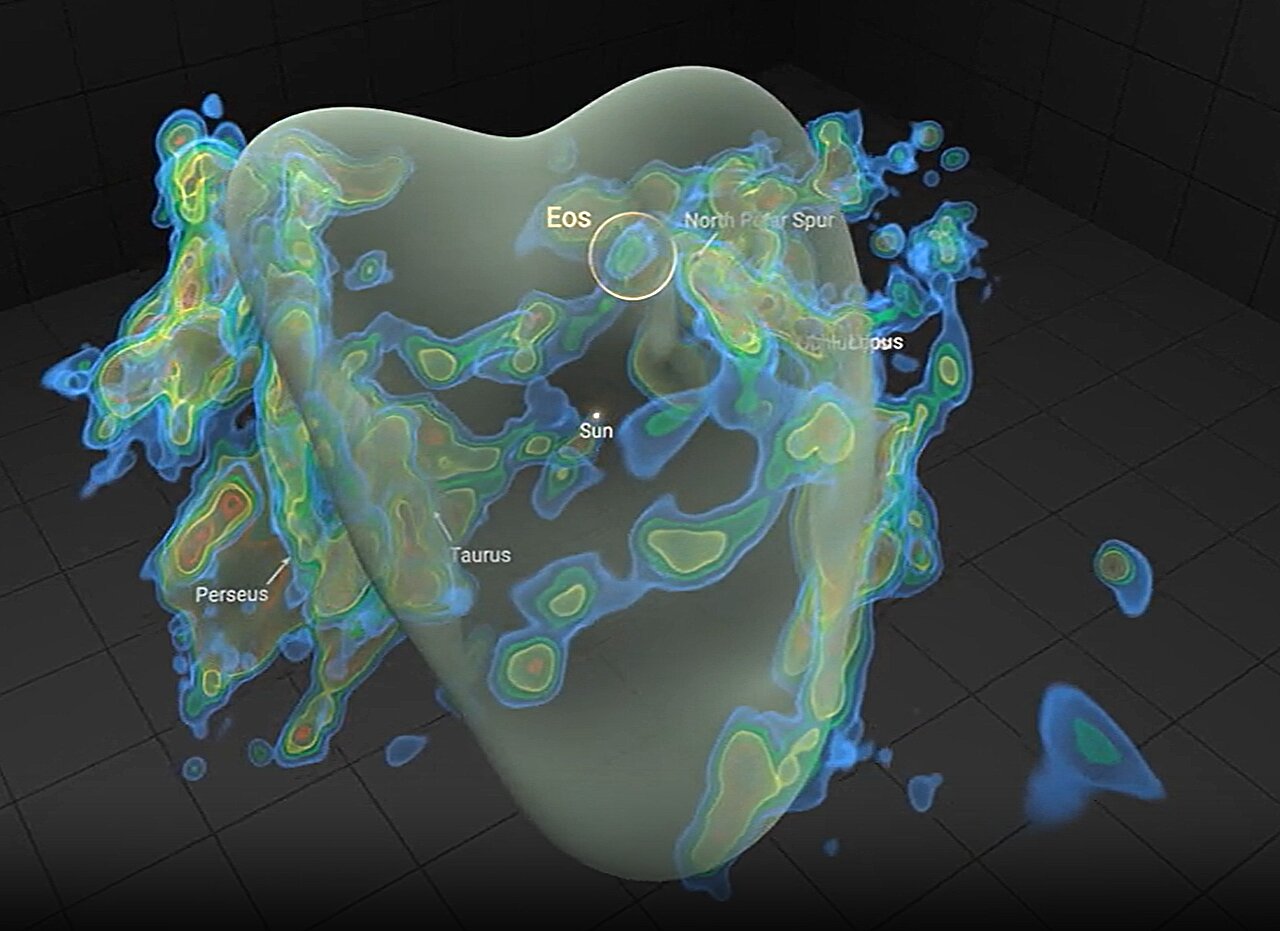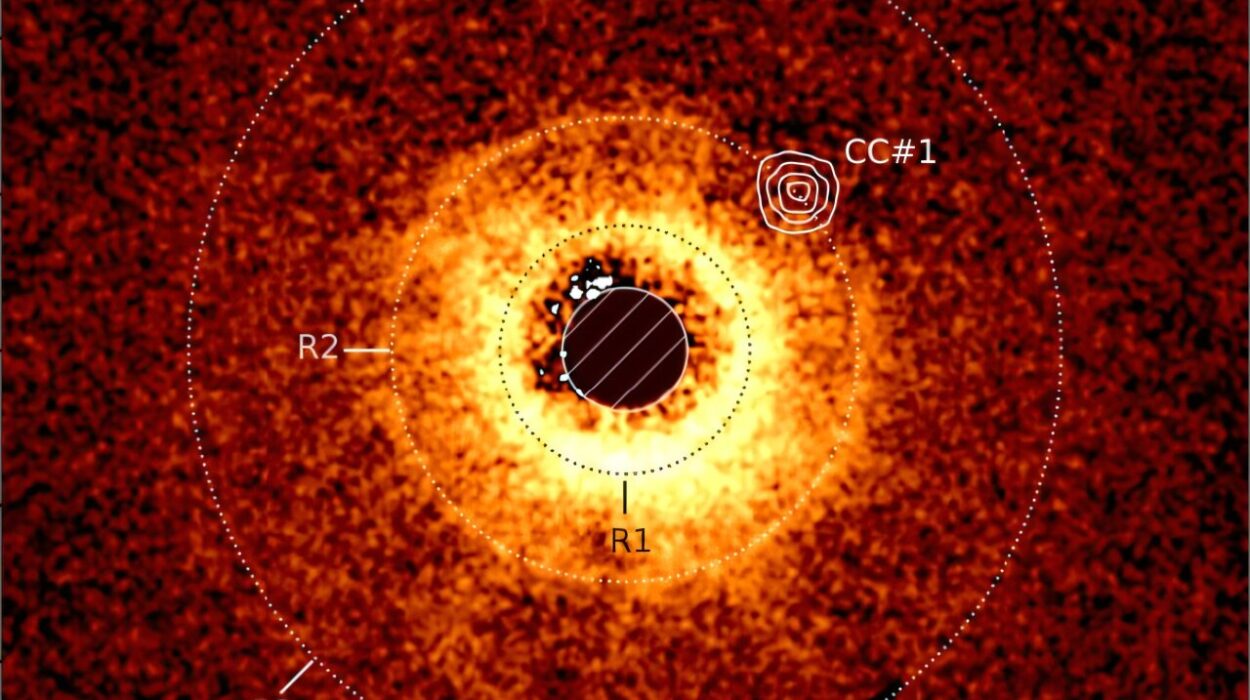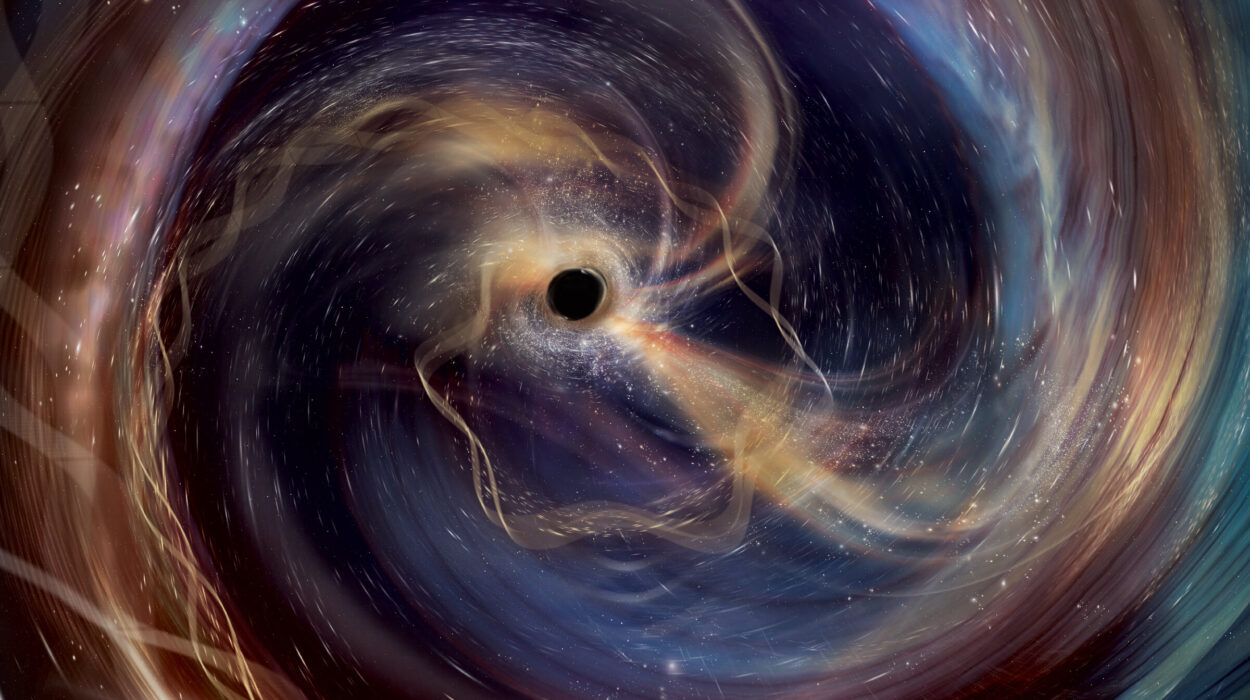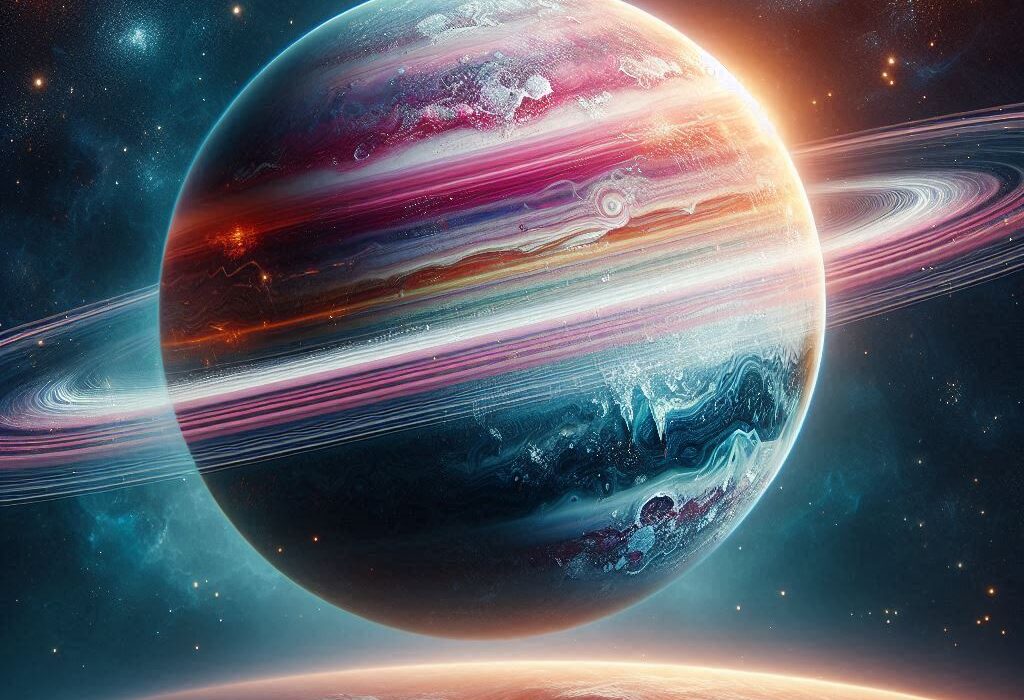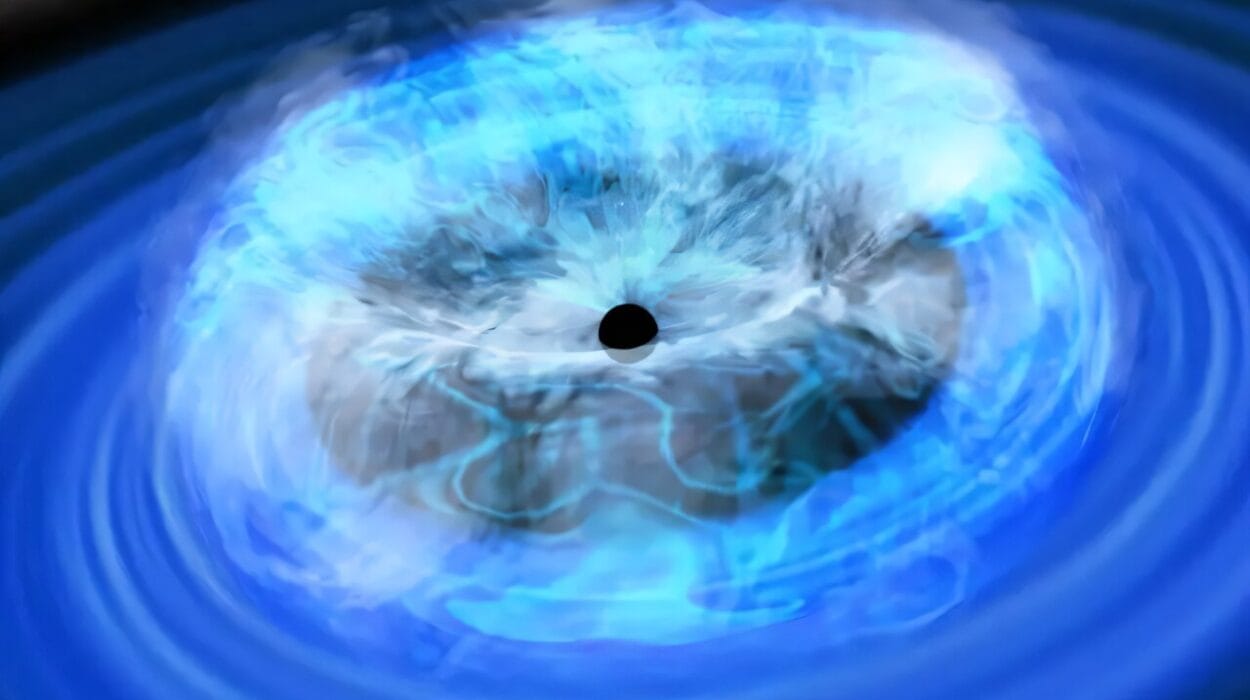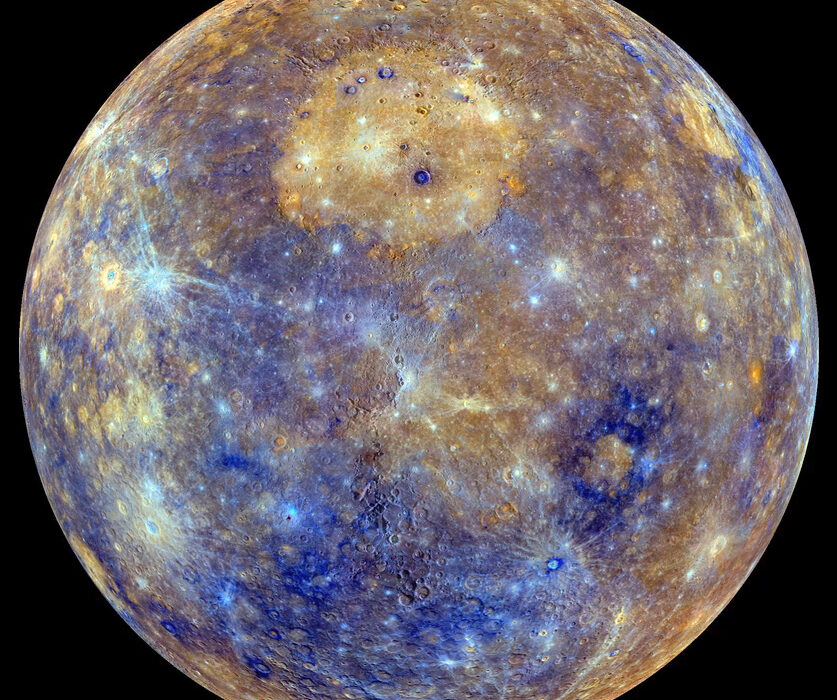In the grand theater of the cosmos, where stars blaze and galaxies dance, many of the most important players move unseen. But sometimes, new light—literally—reveals hidden wonders. A groundbreaking discovery by an international team led by Rutgers University–New Brunswick astrophysicist Blakesley Burkhart has uncovered one of these secret actors: a colossal, star-forming cloud named Eos, a vast structure lurking shockingly close to Earth, long invisible to our eyes.
What makes this revelation extraordinary is not just the size or proximity of Eos, but the method that brought it into view. For the first time, scientists detected a molecular cloud using far-ultraviolet light—a region of the electromagnetic spectrum rarely used to hunt for such cosmic structures. Published in Nature Astronomy, this discovery marks a new chapter in our understanding of how stars and planets come to life.
The Cosmic Cloak of Molecular Clouds
Molecular clouds are the cradles of stars—the dense, cold pockets of gas and dust where the seeds of suns and solar systems are sown. Comprised mostly of molecular hydrogen, the simplest and most abundant element in the universe, these clouds are the silent architects of future galaxies. Yet despite their importance, detecting molecular hydrogen directly has been notoriously difficult.
For decades, astronomers relied on surrogate signals, particularly the glow of carbon monoxide (CO) molecules captured through radio and infrared observations. Since hydrogen itself is shy in traditional wavelengths, CO has served as a cosmic signpost. But this method leaves a blind spot: vast regions of “CO-dark” hydrogen could be hiding in plain sight, escaping detection altogether.
That hidden realm is exactly where Eos was waiting.
The First Glimmer of Dawn
Eos emerged from the shadows thanks to the Fluorescent Imaging Spectrograph (FIMS-SPEAR), an instrument aboard South Korea’s STSAT-1 satellite. Although STSAT-1’s mission ended years ago, its treasure trove of data was publicly released in 2023—and it was then that Burkhart stumbled upon something extraordinary.
Analyzing the far-ultraviolet fluorescence from molecular hydrogen, the team noticed something unprecedented: a cloud glowing softly in the darkness, not because of starlight, but because its hydrogen molecules themselves were emitting faint ultraviolet light after being excited by cosmic radiation.
“This is the first-ever molecular cloud discovered by looking for far-ultraviolet emission of molecular hydrogen directly,” Burkhart explained. “The data showed glowing hydrogen molecules detected via fluorescence in the far ultraviolet. This cloud is literally glowing in the dark.”
The naming of the cloud as Eos, after the Greek goddess of dawn, is more than poetic. It marks the dawning of a new era in how scientists can explore the molecular universe—and hints at countless undiscovered structures hidden in the darkness.
A Colossal Neighbor
Located a mere 300 light-years away, Eos is one of the closest known molecular clouds to our solar system. Sprawling across a staggering area equivalent to 40 full moons in the sky, it is a crescent-shaped titan with a mass about 3,400 times that of our Sun. Perched on the outer rim of the Local Bubble—a vast, low-density cavity surrounding the Sun—Eos is both massive and delicately ephemeral.
According to models, this majestic cloud is expected to evaporate within 6 million years—a blink of an eye on cosmic timescales. This fragile impermanence adds a bittersweet urgency to the study of Eos: a precious opportunity to witness molecular cloud formation and evolution before it fades.
Unlocking the Secrets of Star Birth
The discovery of Eos opens a rare window into the heart of cosmic alchemy.
“When we look through our telescopes, we catch whole solar systems in the act of forming, but we don’t know in detail how that happens,” Burkhart said. “Our discovery of Eos is exciting because we can now directly measure how molecular clouds are forming and dissociating, and how a galaxy begins to transform interstellar gas and dust into stars and planets.”
The interstellar medium—the vast, thin ocean of gas and dust between stars—is the birthplace of everything that shines and grows in galaxies. Understanding how patches of this medium coalesce into star-forming clouds is essential to unlocking the origin stories not just of stars, but of planets and potentially life itself.
Eos presents a pristine laboratory to study these processes up close, unmarred by the complicating effects of nearby massive stars or violent supernovae. It stands, silent and glowing, at a crossroads in the galaxy’s life cycle.
A New Tool for Galactic Archaeology
The implications of detecting Eos using far-ultraviolet fluorescence stretch far beyond a single cloud.
“The use of the far-ultraviolet fluorescence emission technique could rewrite our understanding of the interstellar medium,” said Thavisha Dharmawardena, a NASA Hubble Fellow at New York University and co-lead author of the study. “It could uncover hidden clouds across the galaxy and even out to the furthest detectable limits of cosmic dawn.”
By shifting the hunt for molecular clouds into the ultraviolet realm, astronomers may now peer deeper into the murky reaches of the galaxy—and beyond. With instruments like the James Webb Space Telescope (JWST) and upcoming missions designed to push the ultraviolet frontier, the possibilities are breathtaking.
Already, Burkhart and colleagues are using JWST data to seek the furthest molecular hydrogen ever detected, peering back to the earliest epochs of cosmic history. “Using JWST, we may have found the very furthest hydrogen molecules from the Sun,” Burkhart said. “So, we have found both some of the closest and farthest using far-ultraviolet emission.”
The Long Journey of Hydrogen
In a way, the atoms within Eos have been on a 13.6-billion-year voyage. Forged in the fires of the Big Bang, this hydrogen drifted through the expanding universe, coalescing into galaxies and flowing along cosmic filaments like rivers across space. Over time, some of it found its way to our corner of the Milky Way, eventually gathering into the shimmering crescent that we now call Eos.
“The story of the cosmos is a story of the rearrangement of atoms over billions of years,” Burkhart said. “The hydrogen that is currently in the Eos cloud existed at the time of the Big Bang and eventually fell onto our galaxy and coalesced near the Sun. It’s been a long journey.”
To look at Eos, then, is to look at ancient matter—at the raw material that, billions of years from now, might blossom into stars, planets, and perhaps even new forms of life.
A Mission for the Future
The excitement surrounding Eos is fueling momentum for even greater exploration. A proposed NASA space mission—also named Eos—would expand the search for far-ultraviolet molecular hydrogen clouds across the Milky Way and beyond. By systematically mapping the hidden molecular universe, scientists hope to build a complete census of the structures that set the stage for star formation.
The Eos mission would transform our understanding of how galaxies evolve, tracing the life cycles of interstellar matter from the earliest glimmers of cosmic dawn to the present day.
A Dawn Worth Watching
When Blakesley Burkhart first sifted through the forgotten data of a long-quiet satellite, she could hardly have predicted what she would find. In a universe still full of mysteries, sometimes discovery comes not with a bang, but with a faint, persistent glow—a whisper from hydrogen molecules, glowing in the far reaches of ultraviolet light.
Eos is more than just a cloud; it is a reminder that the cosmos is still filled with unseen wonders, waiting patiently for those with the curiosity and creativity to uncover them.
As astronomers refine their techniques and cast their ultraviolet nets wider, we may soon discover that our galaxy is far richer, more intricate, and more alive than we ever dared imagine. And at the heart of this new dawn, glowing softly in the dark, will be Eos—the goddess of the morning, heralding a new era of cosmic exploration.
Reference: A nearby dark molecular cloud in the Local Bubble revealed via H2 fluorescence, Nature Astronomy (2025). DOI: 10.1038/s41550-025-02541-7
